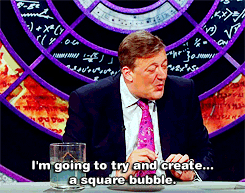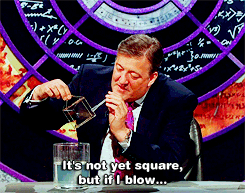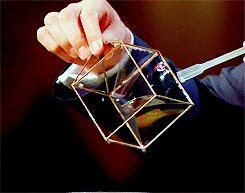Jensen’s Face In The First Gif Is The Best. He Is Like, OMG! Finally! Y’all Can Acknowledge My Pain









Jensen’s face in the first gif is the best. He is like, OMG! Finally! Y’all can acknowledge my pain (x).
More Posts from Alcorandmizar and Others
Guys. I just realized something.
I JUST REALIZED SOMETHING.
In this scene in DH part II, Harry, Ron and Hermione are just running around doing shit. Until now, I thought it was rather pointless and that they just took it in the movie to add some action.
But then.
I REALIZED SOMETHING.
Okay, in this order, it happens.
First, a giant, ugly creature tries to kill them with a large weapon. They hide behind a pipe.
Second, there are spiders. Loads of ‘em.
Third, there is a werewolf.
Then, there are dementors.
In that particular order.
Still don’t get it? We’ll take it again.
FIRST, A GIANT, UGLY CREATURE TRYING TO KILL THEM WITH A LARGE WEAPON AND THEY HIDE BEHIND A PIPE.

SECOND, THERE ARE SPIDERS. LOADS OF THEM.

THIRD, THERE IS A WEREWOLF.

THEN, THERE ARE DEMENTORS.

THIS SCENE IS A PIECE OF ART AND IT IS SO GODDAMN IMPORTANT BECAUSE THIS IS WHAT THEY HAVE ALREADY BATTLED AND NOW THEY DO IT AGAIN IN A SECOND WITH A SMALL SPELL AND IT SHOWS HOW MUCH THEY HAVE BEEN THROUGH AND HOW MUCH THEY HAVE GROWN.
thank you and goodnight
NASA Technology in Your Life
How does NASA technology benefit life on Earth? It probably has an impact in more ways than you think! Since 1976, our Spinoff program has profiled nearly 2,000 space technologies that have transformed into commercial products and services. In celebration of Spinoff’s 40th year of publication, we’ve assembled a collection of spinoffs that have had the greatest impact on Earth.
Take a look and see how many you utilize on a regular basis:
Digital Image Sensors

Whether you take pictures and videos with a DSLR camera or a cell phone, or even capture action on the go with a device like a GoPro Hero, you’re using NASA technology. The CMOS active pixel sensor in most digital image- capturing devices was invented when we needed to miniaturize cameras for interplanetary missions. This technology is also widely used in medical imaging and dental X-ray devices.
Enriched Baby Formula

While developing life support for Mars missions, NASA-funded researchers discovered a natural source for an omega-3 fatty acid previously found primarily in breast milk that plays a key role in infant development. The ingredient has since been added to more than 90% of infant formula on the market and is helping babies worldwide develop healthy brains, eyes and hearts.
NASTRAN Software

NASTRAN is a software developed by our engineers that performs structural analysis in the 1960s. Still popular today, it’s been used to help design everything from airplanes and cars to nuclear reactors and even Disney’s Space Mountain roller coaster.
Food Safety Standards

Looking to ensure the absolute safety of prepackaged foods for spaceflight, we partnered with the Pillsbury Company to create a new, systematic approach to quality control. Now known as Hazard Analysis and Critical Control Points (HACCP), the method has become an industry standard that benefits consumers worldwide by keeping food free from a wide range of potential chemical, physical and biological hazards.
Neutral Body Posture Specifications

What form does the human body naturally assume when all physical influences, including the pull of gravity, stop affecting it? We conducted research to find out using Skylab, America’s first space station, and later published specifications for what it called neutral body posture. The study has informed seat designs in everything from airplanes and office chairs to several models of Nissan automobiles.
Advanced Water Filtration

We recently discovered unexpected sources of water on the moon and Mars, but even so, space remains a desert for human explorers, and every drop must be recycled and reused. A nano filter devised to purify water in orbit is currently at work on Earth, in devices that supply water to remote villages as well as in a water bottle that lets hikers and adventurers stay hydrated using streams and lakes.
Swimsuit Designs

Wind-tunnel testing at our Langley Research Center played a key role in the development of Speedo’s LZR Racer swimsuit, proving which materials and seams best reduced drag as a swimmer cuts through the water. The swimsuit made a splash during its Olympic debut in 2008, as nearly every medal winner and world-record breaker wore the suit.
Air Purifier

When plants grow, they release a gas called ethylene that accelerates decay, hastening the wilting of flowers and the ripening of fruits and vegetables. Air circulation on Earth keeps the fumes from building up, but in the hermetically sealed environment of a spacecraft, ethylene poses a real challenge to the would-be space farmers. We funded the development of an ethylene scrubber for the International Space Station that has subsequently proved capable of purifying air on Earth from all kinds of pathogens and particulates. Grocery stores use it to keep produce fresh longer. It’s also been marketed for home use and has even been embraced by winemakers, who employ the scrubber to keep aging wine in barrels free from mold, mildew and musty odors.
Scratch-Resistant, UV-Reflective Lenses

Some of the earliest research into effective scratch-resistant coatings for prescription and sunglass lenses drew from work done at Ames Research Center on coatings for astronaut helmet visors and plastic membranes used in water purification systems. In the 1980s, we developed sunlight-filtering lenses to provide eye protection and enhance colors, and these lenses have found their way into sunglasses, ski goggles and safety masks for welders.
Dustbuster

An Apollo-era partnership with Black & Decker to build battery-operated tools for moon exploration and sample collection led to the development of a line of consumer, medical and industrial hand-held cordless tools. This includes the popular Dustbuster cordless vacuum.
To see even more of our spinoff technologies, visit: http://www.nasa.gov/offices/oct/40-years-of-nasa-spinoff
Make sure to follow us on Tumblr for your regular dose of space: http://nasa.tumblr.com

Saving people, hunting things, the family business? I am down. But I was raised on Tolkien, man. I mean, where is all this? Where are my White Walkers and my volcano and magic ring to throw in the damn thing? Where’s my quest?


http://iglovequotes.net/

It’s father’s day, and I have no real time to finish this, but I wanted all my Trekkie friends and family all around the world to have this. ANTON YELCHIN 1989-2016 mrscratch0753.tumblr.com
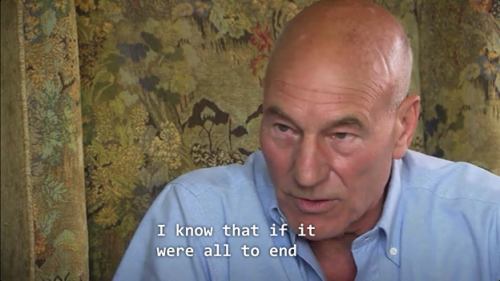

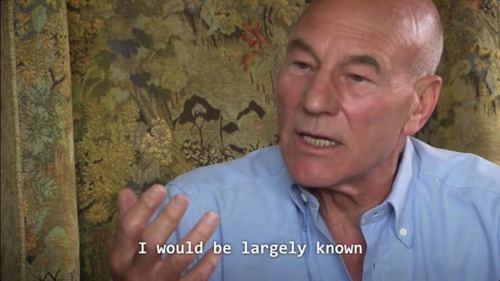
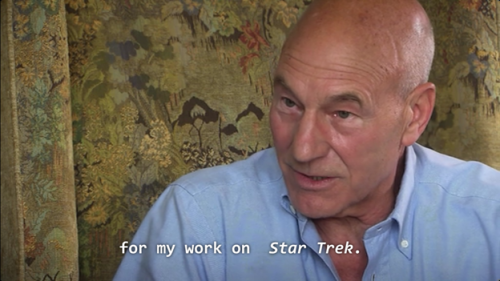
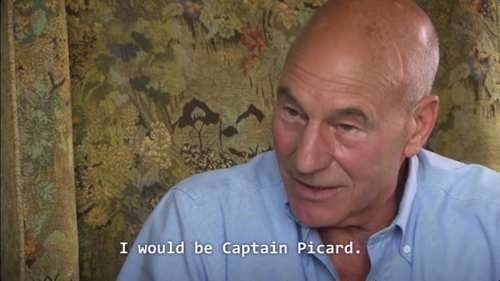


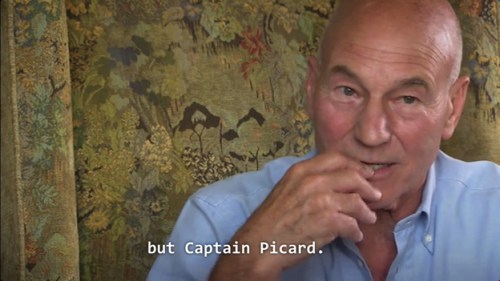
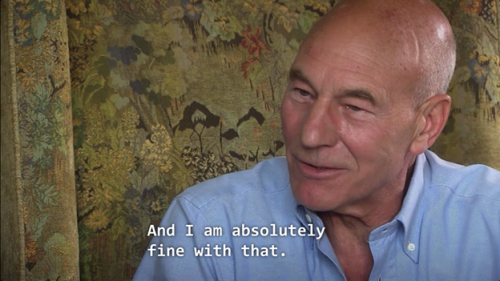
From the William Shatner Star Trek documentary “The Captains”.
This makes me feel so happy. I can’t even say.
Humans Are Weird
So there has been a bit of “what if humans were the weird ones?” going around tumblr at the moment and Earth Day got me thinking. Earth is a wonky place, the axis tilts, the orbit wobbles, and the ground spews molten rock for goodness sakes. What if what makes humans weird is just our capacity to survive? What if all the other life bearing planets are these mild, Mediterranean climates with no seasons, no tectonic plates, and no intense weather?
What if several species (including humans) land on a world and the humans are all “SCORE! Earth like world! Let’s get exploring before we get out competed!” And the planet starts offing the other aliens right and left, electric storms, hypothermia, tornadoes and the humans are just … there… counting seconds between flashes, having snowball fights, and just surviving.
-
 tavamamma4567 liked this · 1 month ago
tavamamma4567 liked this · 1 month ago -
 leviticus16 reblogged this · 5 months ago
leviticus16 reblogged this · 5 months ago -
 4sidedtrianglz liked this · 6 months ago
4sidedtrianglz liked this · 6 months ago -
 samwgirl liked this · 7 months ago
samwgirl liked this · 7 months ago -
 samwgirl reblogged this · 7 months ago
samwgirl reblogged this · 7 months ago -
 ghostgirl-22 liked this · 9 months ago
ghostgirl-22 liked this · 9 months ago -
 foren-sis liked this · 9 months ago
foren-sis liked this · 9 months ago -
 samuelcuntt liked this · 9 months ago
samuelcuntt liked this · 9 months ago -
 jackiefour liked this · 9 months ago
jackiefour liked this · 9 months ago -
 niwolah reblogged this · 9 months ago
niwolah reblogged this · 9 months ago -
 dontwanttochoose liked this · 9 months ago
dontwanttochoose liked this · 9 months ago -
 mpregspn liked this · 9 months ago
mpregspn liked this · 9 months ago -
 aliusfrater reblogged this · 9 months ago
aliusfrater reblogged this · 9 months ago -
 hellodtany liked this · 9 months ago
hellodtany liked this · 9 months ago -
 theangiediary reblogged this · 9 months ago
theangiediary reblogged this · 9 months ago -
 innertrashsuitcaseflower liked this · 9 months ago
innertrashsuitcaseflower liked this · 9 months ago -
 fandom-hoarder reblogged this · 9 months ago
fandom-hoarder reblogged this · 9 months ago -
 judythbl liked this · 1 year ago
judythbl liked this · 1 year ago -
 myladyem liked this · 1 year ago
myladyem liked this · 1 year ago -
 supergaysupernatural liked this · 1 year ago
supergaysupernatural liked this · 1 year ago -
 winchestersbaby067 reblogged this · 1 year ago
winchestersbaby067 reblogged this · 1 year ago -
 missmesblog liked this · 2 years ago
missmesblog liked this · 2 years ago -
 yyyy9966 liked this · 2 years ago
yyyy9966 liked this · 2 years ago -
 justawaywardwinchestergirl reblogged this · 3 years ago
justawaywardwinchestergirl reblogged this · 3 years ago -
 justawaywardwinchestergirl liked this · 3 years ago
justawaywardwinchestergirl liked this · 3 years ago -
 j2rightnow liked this · 3 years ago
j2rightnow liked this · 3 years ago -
 vetgal29 liked this · 3 years ago
vetgal29 liked this · 3 years ago -
 familycomesfirst42 reblogged this · 3 years ago
familycomesfirst42 reblogged this · 3 years ago -
 yourdumbdevil liked this · 3 years ago
yourdumbdevil liked this · 3 years ago -
 jellybracelet liked this · 3 years ago
jellybracelet liked this · 3 years ago -
 kakatin reblogged this · 3 years ago
kakatin reblogged this · 3 years ago -
 crystalblueuniverse reblogged this · 3 years ago
crystalblueuniverse reblogged this · 3 years ago -
 kakatin liked this · 3 years ago
kakatin liked this · 3 years ago -
 glowingsamulet reblogged this · 3 years ago
glowingsamulet reblogged this · 3 years ago -
 glowingsamulet liked this · 3 years ago
glowingsamulet liked this · 3 years ago -
 waywardmaslow liked this · 3 years ago
waywardmaslow liked this · 3 years ago -
 deanwinchesterswitch liked this · 3 years ago
deanwinchesterswitch liked this · 3 years ago -
 easilyaddictedin123 liked this · 3 years ago
easilyaddictedin123 liked this · 3 years ago -
 goodnight-sammy liked this · 3 years ago
goodnight-sammy liked this · 3 years ago -
 brotherfather liked this · 3 years ago
brotherfather liked this · 3 years ago -
 sonitassv30 liked this · 3 years ago
sonitassv30 liked this · 3 years ago -
 checkthisoutbro1 liked this · 3 years ago
checkthisoutbro1 liked this · 3 years ago -
 esendoran liked this · 3 years ago
esendoran liked this · 3 years ago -
 samwinchestergf liked this · 3 years ago
samwinchestergf liked this · 3 years ago -
 out-in-the-open reblogged this · 3 years ago
out-in-the-open reblogged this · 3 years ago
Hi! Midwesterner, USA. Physics PhD nerd. Astronomy geek. Crafty. TV lover: Supernatural. J2. Orphan Black. Game of Thrones. Doctor Who. Sherlock. The Middle. Jane the Virgin. The Good Wife. iZombie.
147 posts
